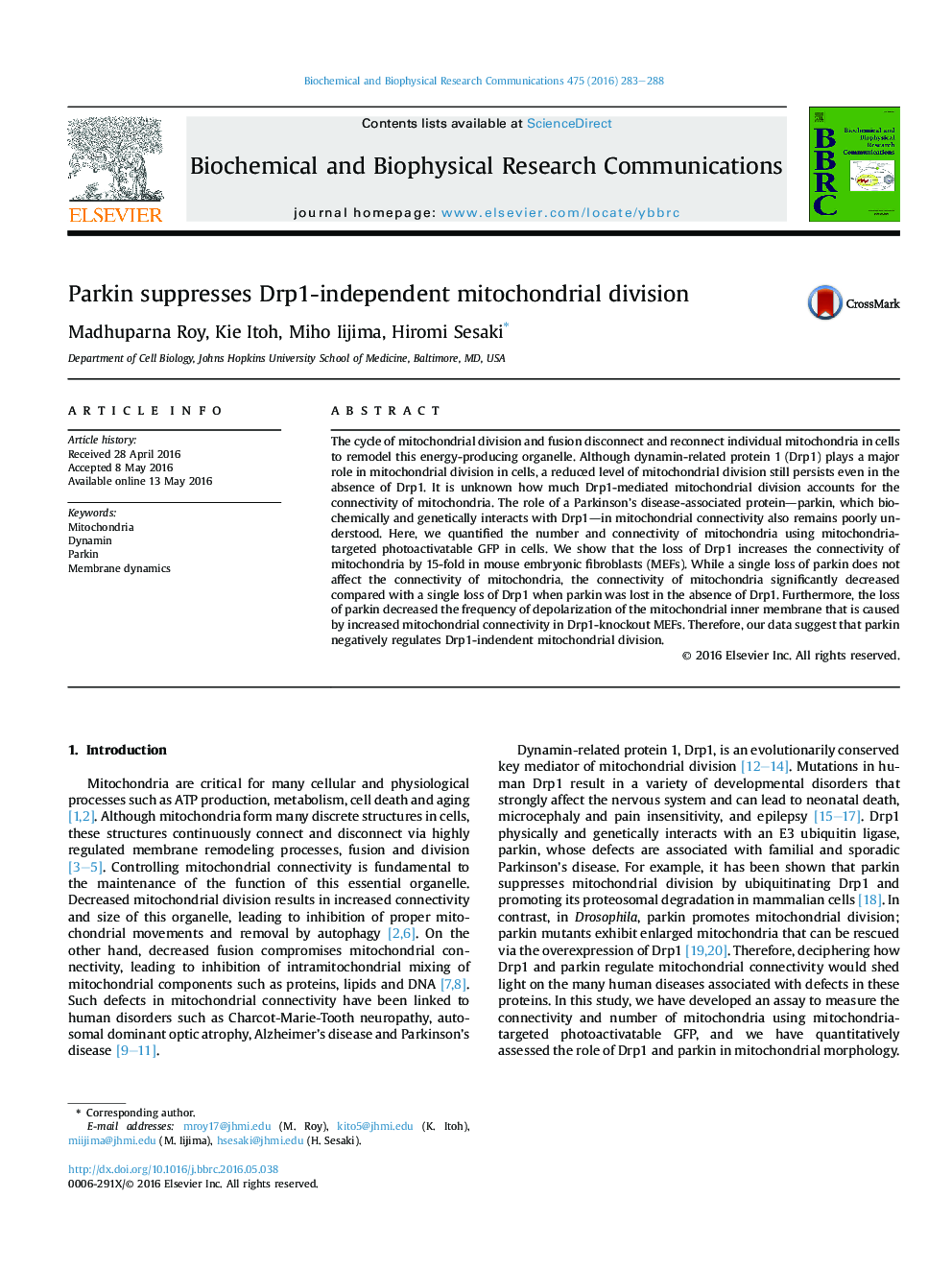| کد مقاله | کد نشریه | سال انتشار | مقاله انگلیسی | نسخه تمام متن |
|---|---|---|---|---|
| 1927808 | 1050260 | 2016 | 6 صفحه PDF | دانلود رایگان |
• A Drp1-mediated mechanism accounts for ∼95% of mitochondrial division.
• Parkin controls the connectivity of mitochondria via a mechanism that is independent of Drp1.
• In the absence of Drp1, connected mitochondria transiently depolarize.
• The transient depolarization is independent of calcium signaling and uncoupling protein 2.
The cycle of mitochondrial division and fusion disconnect and reconnect individual mitochondria in cells to remodel this energy-producing organelle. Although dynamin-related protein 1 (Drp1) plays a major role in mitochondrial division in cells, a reduced level of mitochondrial division still persists even in the absence of Drp1. It is unknown how much Drp1-mediated mitochondrial division accounts for the connectivity of mitochondria. The role of a Parkinson’s disease-associated protein—parkin, which biochemically and genetically interacts with Drp1—in mitochondrial connectivity also remains poorly understood. Here, we quantified the number and connectivity of mitochondria using mitochondria-targeted photoactivatable GFP in cells. We show that the loss of Drp1 increases the connectivity of mitochondria by 15-fold in mouse embryonic fibroblasts (MEFs). While a single loss of parkin does not affect the connectivity of mitochondria, the connectivity of mitochondria significantly decreased compared with a single loss of Drp1 when parkin was lost in the absence of Drp1. Furthermore, the loss of parkin decreased the frequency of depolarization of the mitochondrial inner membrane that is caused by increased mitochondrial connectivity in Drp1-knockout MEFs. Therefore, our data suggest that parkin negatively regulates Drp1-indendent mitochondrial division.
Journal: Biochemical and Biophysical Research Communications - Volume 475, Issue 3, 1 July 2016, Pages 283–288
